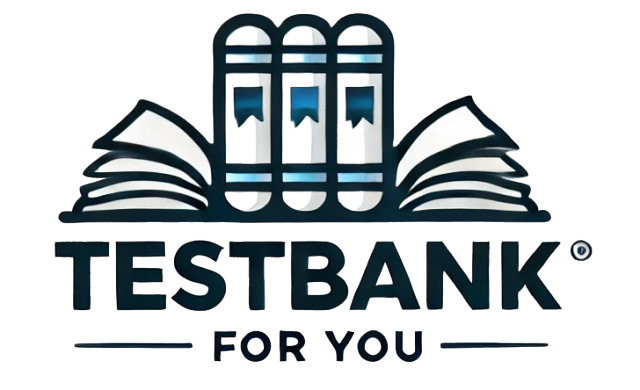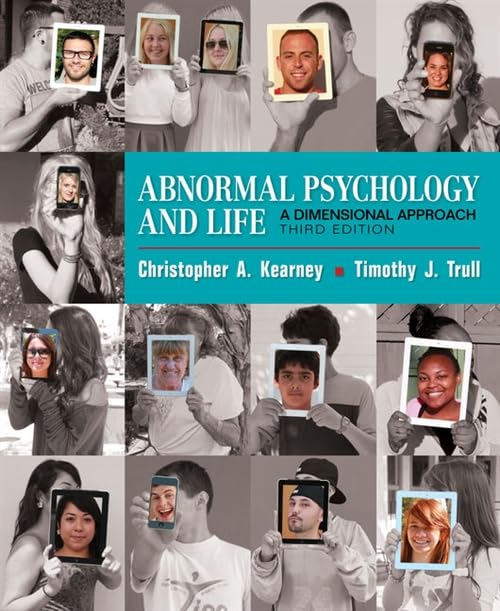Abnormal Psychology and Life A Dimensional Approach 3rd Edition by Kearney Test Bank
Original price was: $60.00.$30.00Current price is: $30.00.
Test Bank for Abnormal Psychology and Life: A Dimensional Approach, 3rd Edition, Christopher A. Kearney, Timothy J. Trull, Star M. Burruto, ISBN-10: 1337273260, ISBN-13: 9781337273268, ISBN-10: 1337098108, ISBN-13: 9781337098106 To get more information about this please send us E-mail to smtb7000@gmail.com
Description
Test Bank for Abnormal Psychology and Life: A Dimensional Approach (3rd Edition)
Authors: Christopher A. Kearney, Timothy J. Trull, Star M. Burruto
ISBN-10: 1337273260 | ISBN-13: 9781337273268
Alternate ISBNs: 1337098108 | 9781337098106
The Test Bank for Abnormal Psychology and Life: A Dimensional Approach, 3rd Edition is a valuable academic resource designed to support instructors and students in mastering the key concepts of abnormal psychology. This comprehensive test bank includes a wide range of question types—multiple choice, true/false, short answer, and applied case-based questions—that align directly with the structure and content of the textbook.
Each chapter is carefully designed to reflect a dimensional approach to understanding mental health disorders, emphasizing a continuum rather than categorical labels. This test bank is ideal for use in undergraduate psychology courses, clinical psychology classes, and mental health education programs.
Here’s a detailed overview of what each chapter in the test bank covers:
Chapter 1: Abnormal Psychology and Life
Introduces the definition and scope of abnormal psychology with a focus on how mental disorders impact real life. Questions address key terms, core principles, and historical context.
Chapter 2: Perspectives on Abnormal Psychology
Covers major theoretical models, including biological, psychological, sociocultural, and integrative perspectives. The test bank evaluates students’ ability to compare and apply different models.
Chapter 3: Risk and Prevention of Mental Disorders
Focuses on the risk factors that contribute to mental illness and effective prevention strategies. Items test understanding of protective factors, epidemiology, and public health approaches.
Chapter 4: Diagnosis, Assessment, and Study of Mental Disorders
Explores diagnostic systems (like the DSM-5), psychological assessments, and research methods. Test questions assess familiarity with validity, reliability, and clinical interviewing techniques.
Chapter 5: Anxiety, Obsessive-Compulsive, and Trauma-Related Disorders
Evaluates knowledge of disorders such as generalized anxiety, panic disorder, phobias, OCD, and PTSD. Students are tested on symptoms, causes, and treatment approaches.
Chapter 6: Somatic Symptom and Dissociative Disorders
Covers conditions like conversion disorder, illness anxiety disorder, dissociative identity disorder, and related challenges in diagnosis and treatment.
Chapter 7: Depressive and Bipolar Disorders and Suicide
Focuses on mood disorders, including major depressive disorder, bipolar I and II, and suicide risk factors. The test bank includes clinical scenarios and treatment-focused questions.
Chapter 8: Eating Disorders
Assesses knowledge of anorexia nervosa, bulimia nervosa, binge-eating disorder, and their physical and psychological consequences.
Chapter 9: Substance-Related Disorders
Includes questions on substance use, abuse, dependence, and addiction. Covers stimulants, depressants, hallucinogens, and treatment options.
Chapter 10: Personality Disorders
Covers Cluster A, B, and C personality disorders, including borderline, narcissistic, antisocial, and avoidant personality disorders. Items test diagnostic criteria and clinical features.
Chapter 11: Sexual Dysfunctions, Paraphilic Disorders, and Gender Dysphoria
Explores issues related to sexual health, sexual behavior disorders, and gender identity. Questions reflect diagnostic updates and ethical considerations.
Chapter 12: Schizophrenia and Other Psychotic Disorders
Examines the spectrum of psychotic disorders, with a focus on symptoms, cognitive deficits, and long-term outcomes.
Chapter 13: Developmental and Disruptive Behavior Disorders
Includes childhood disorders like autism spectrum disorder, ADHD, conduct disorder, and oppositional defiant disorder.
Chapter 14: Neurocognitive Disorders
Assesses understanding of dementia, Alzheimer’s disease, and other age-related cognitive decline conditions.
Chapter 15: Consumer Guide to Abnormal Psychology
Focuses on how consumers interact with mental health services, including choosing providers, understanding treatment rights, and mental health advocacy.
https://testbankforyou.com/shop/










